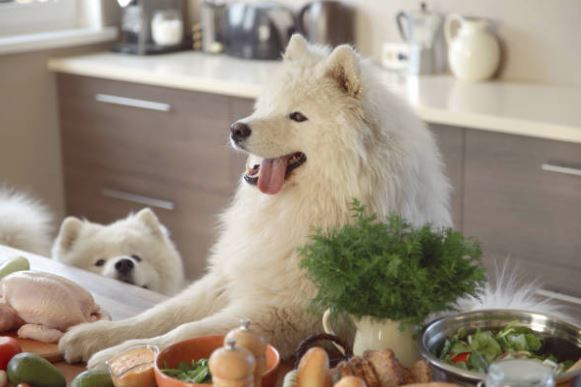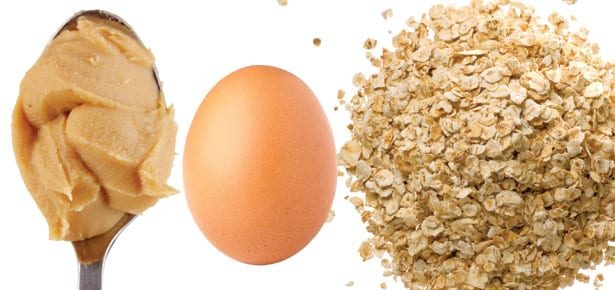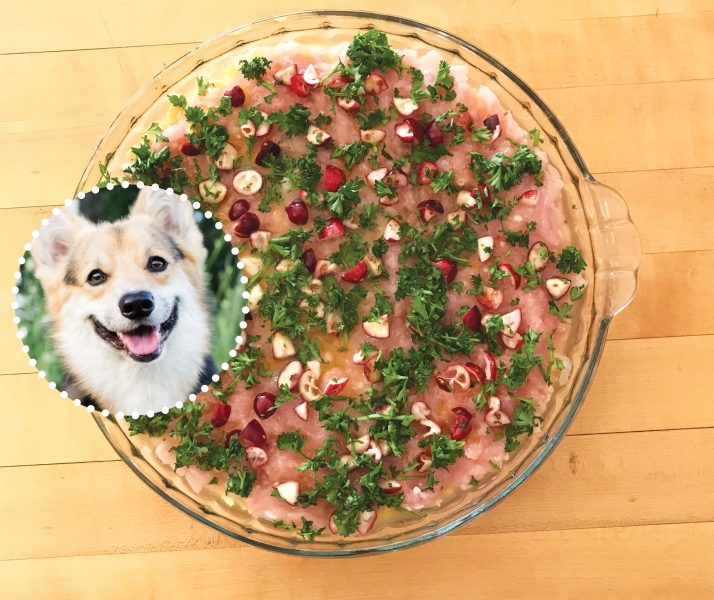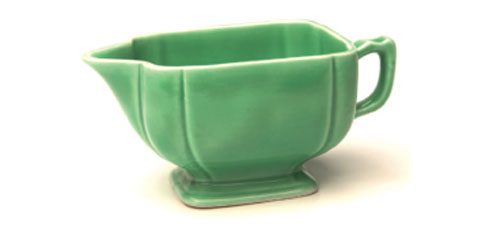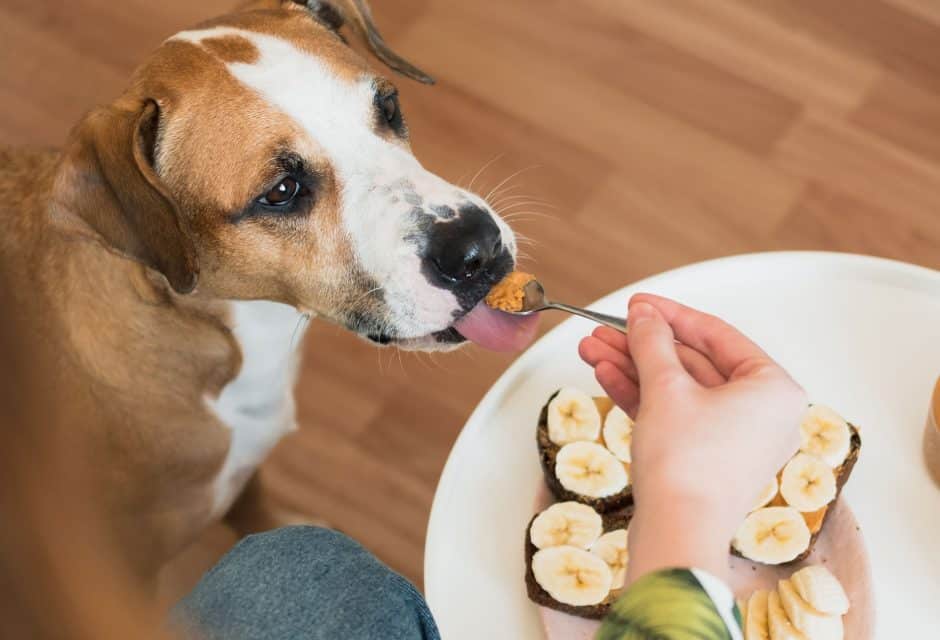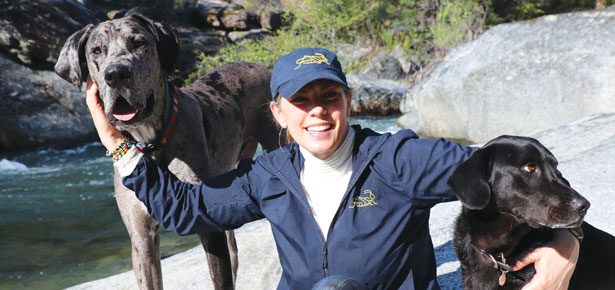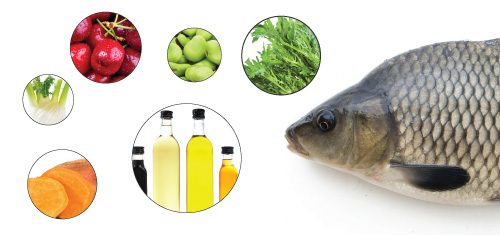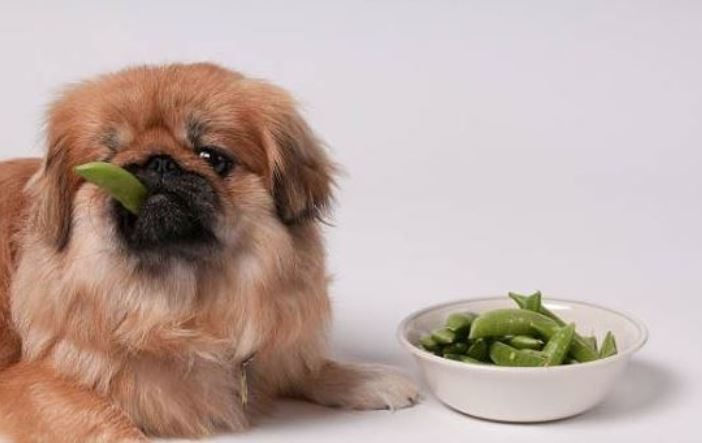
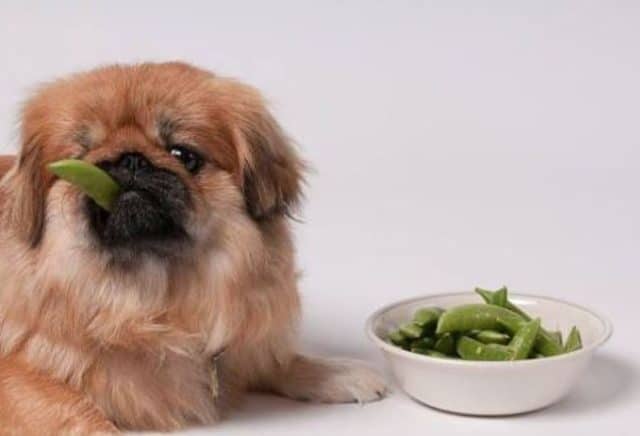
Vegetables Dogs Can Eat
These vegetables are good for dogs. Add these healthy veggies to your dog's dinner
For a dog, part of the pleasure of eating a biscuit or some kibble is the satisfying crunch. You can give your dog that same crunch with a number of raw veggies.
If your dog will eat leafy greens raw, try various types of lettuce, spinach, kale, and even cabbage (for kale and cabbage, see caution below about gas-inducing veggies). Swiss chard is high in vitamins A, K, and C, as well as fibre and protein. This powerhouse veggie can be bitter when raw, so lightly steam before serving. Limit your servings of this as it is also high in oxalic acid which can interfere with calcium absorption. On the up side, one leaf of Swiss chard contains only 38 C, so it's a great low-calorie treat.
Zucchini is a good source of calcium, potassium, beta-carotene, and folate. Zucchini is best fed raw or frozen but can also be served cooked.
Cucumber provides a light, refreshing treat and even though it isn't one of the firmest vegetables, it still has a lovely crunch. Cucumber is very low in calories (17 C/100 g) and it is a good source of calcium, potassium, and beta-carotene. Cucumber is best served raw to your dog.
Kale, the darling of the urban farmer's market scene, can make a welcome addition to your dog's dinner, too. A member of the brassica family, along with rutabagas, turnips, broccoli, and cauliflower, kale is very high in beta carotene, vitamin K, and vitamin C, as well as carotenoid pigments. Try chopping, lightly steaming, and adding to Max's dinner. Kale is low in calories (100 g of kale has 50 C), and is a source of calcium, magnesium, potassium, and beta carotene. You can feed leafy greens such as kale raw, lightly cooked, or dried.
Rutabagas and turnips are a source of calcium and folate and, best of all, they are low in calories (17 C/small turnip). Turnips can be a great treat for your dog. Serve them dehydrated, baked, mashed, or raw.
Broccoli is a good source of fibre, calcium, beta-carotene, folate, and vitamins A and C. It is also low in calories with just 34 C/100 g. You can feed broccoli raw, cooked, or frozen.
Tip: Try drizzling any steamed veggies with a teaspoon of flax seed oil. This will boost your dog's intake of omega fatty acids, which are great for skin and coat health, and will help increase the palatability of veggies, especially the leafy greens.
Nori, superfood of the sea. Found in many grocery stores, nori is the dried seaweed used to wrap sushi. Nori is high in B vitamins, iodine, calcium, and trace minerals. Many dogs enjoy the crisp texture and sea taste. Since seaweeds can be very high in iodine, limit your dog's intake to only a few inches square per day.
Baby carrots are the perfect size as a treat for a larger dog, or as a chew for a small dog. All carrots are a great source of beta-carotene and are enjoyed raw by many dogs. You can try cooking them or drying them into carrot chips to add variety.
Cauliflower is a source of fibre, calcium, potassium, folate, and vitamin K. Like broccoli, it is low in calories (25 C/100 g) and can be fed raw, cooked, or frozen.
Some raw vegetables can cause gas, so it may pay to be cautious when introducing new vegetables into your dog's diet. Cooking and finely chopping the veggies will reduce the risk of gas. To keep their room-clearing ability to a minimum, you may want to limit rutabagas, turnips, kale, and cauliflower.
Treats are a fun way to interact with your dog. Most of the foods mentioned above can be dehydrated to make them more portable, frozen to make them more of a summer treat, or lightly cooked to make them more digestible. Remember, however, as much as your dog enjoys his treats, it is important to have him eating a balanced diet, so treats should be kept under control.
It's very important to keep our dogs lean and fit to lower their risk of arthritis and cancer and ultimately help them live long, healthy lives. Treats should only comprise 10 percent of your dog's daily caloric intake. As an example, the average cup of kibble contains approximately 400 C, so for every cup of kibble your dog eats, he can have 40 Cs worth of treats. Happy snacking!
Join the newsletter and never miss out on dog content again!
"*" indicates required fields
By clicking the arrow, you agree to our web Terms of Use and Privacy & Cookie Policy. Easy unsubscribe links are provided in every email.
